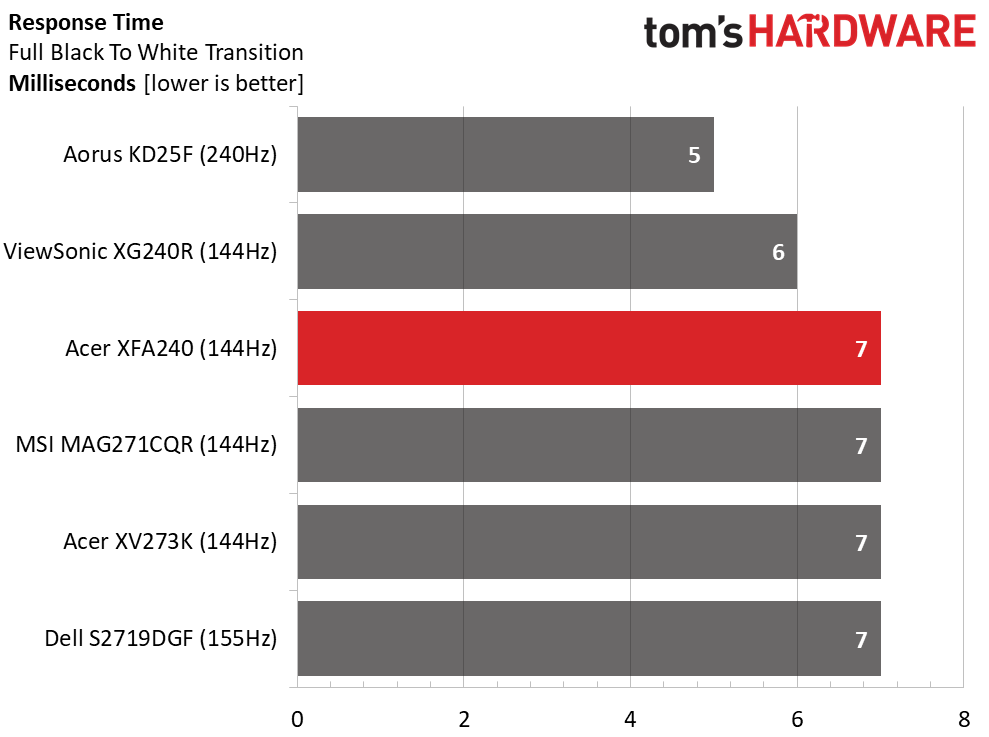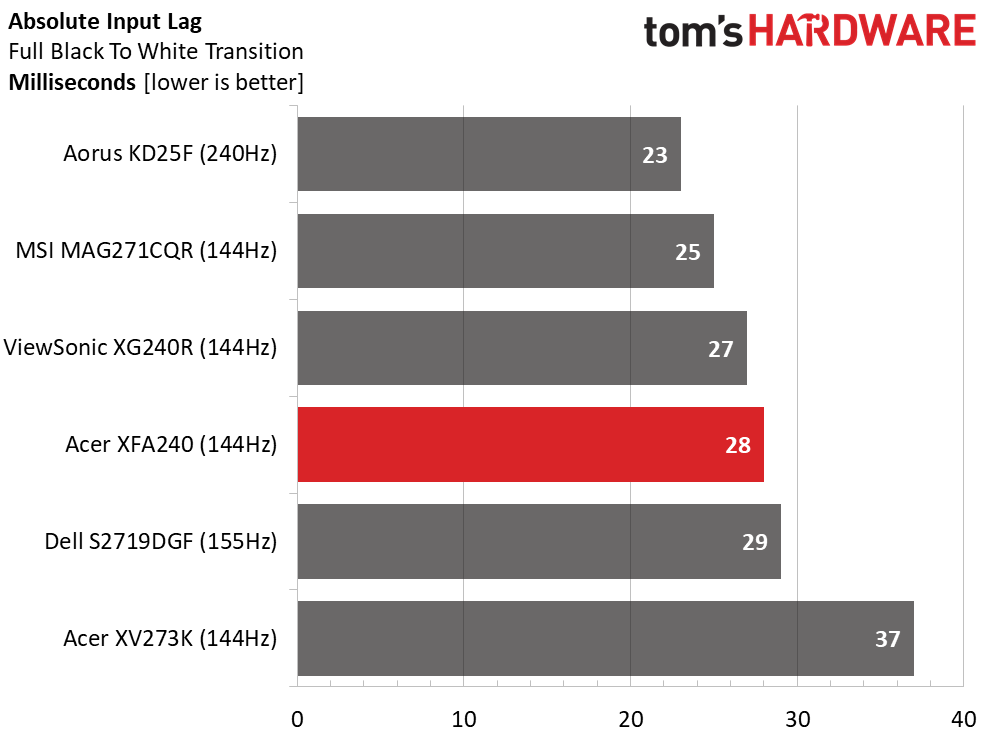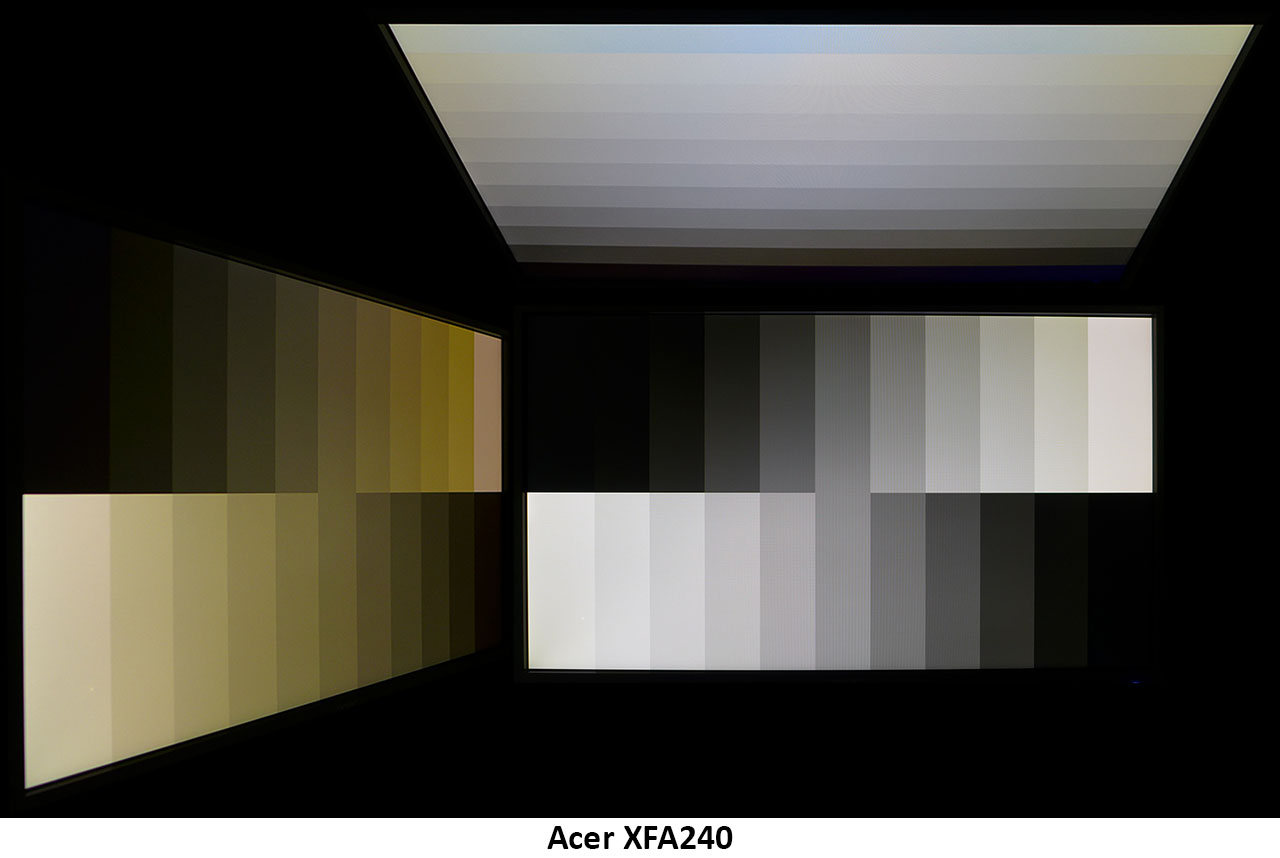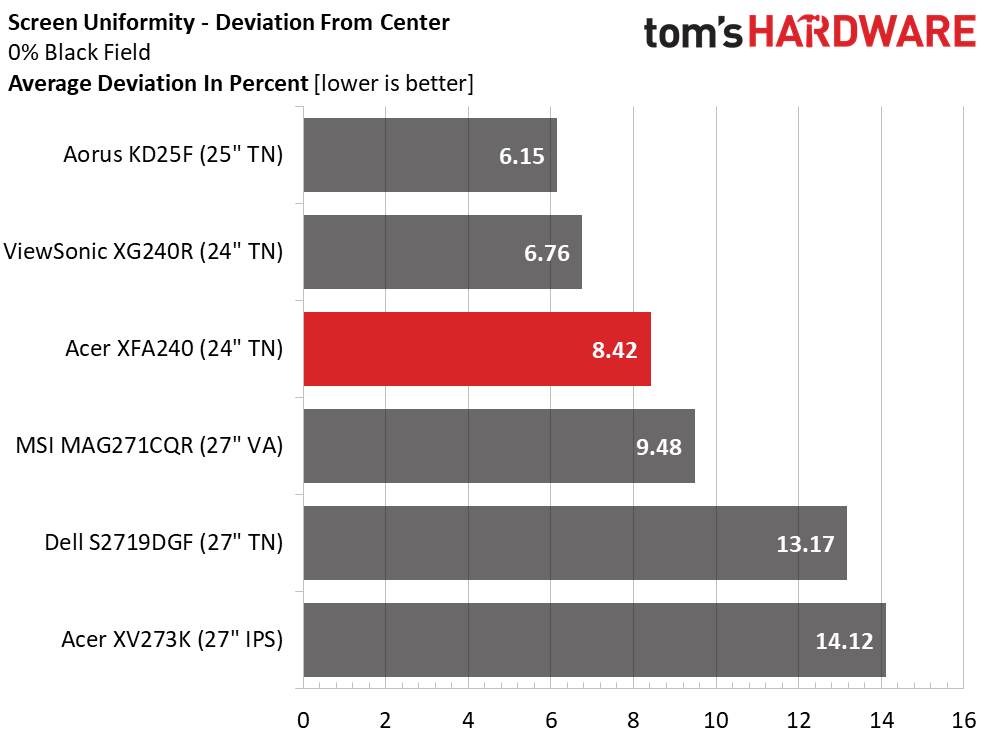Acer XFA240 144Hz Gaming Monitor Review: A Bargain Speed Machine
Why you can trust Tom's Hardware
Viewing Angles, Uniformity, Response and Lag
Viewing Angles
At 24 inches, you likely won’t be sharing the XFA240 with another user, but a slight offset from center won’t ruin the gaming experience.
While TN has the worst viewing angles among the three top technologies (TN, IPS and VA), it’s made improvements in the past couple of years. We could see a clear shift to green and red and a 50% light reduction when looking at the display from 45 degrees to the side. Fortunately, detail is retained in shadow areas. The top-down image looked somewhat washed out, but, again, you can still see all the brightness steps.
Screen Uniformity
To learn how we measure screen uniformity, click here.
The XFA240 showed excellent screen uniformity in our black field test with no visible hot spots, bleed or glow. The measurements say there’s a little extra brightness in the center zone, but we could see it with the naked eye. That contributes to its solid ANSI contrast and made the overall picture look better with greater depth and saturation.
Pixel Response & Input Lag
Click here to read up on our pixel response and input lag testing procedures.


If you want the absolute bleeding edge of speed, only a 240 Hz monitor, like the Aorus, will do. But with mere 144 Hz refresh rates,the other monitors compete well with the Aorus. The XFA240 matched the other screens running at that speed with a 7ms black to white transition. At that speed, blur isn’t an issue, with or without extra overdrive in play. Can you see the difference at the 5ms offered by the Aorus KD25F? Yes, actually; but we’re talking about subtleties here. We doubt anyone but the most skilled gamers will care about that 2ms.
Input lag is also average among 144 Hz monitors. 28ms is fine for just about anyone who frags in their spare time. Again, the 240 Hz Aorus is slightly faster, but it’ll take serious gaming chops to notice the difference. We enjoyed every bit of our gameplay time with the XFA240.
Get Tom's Hardware's best news and in-depth reviews, straight to your inbox.
MORE: Best Gaming Monitors
MORE: How We Test Monitors
MORE: All Monitor Content
Current page: Viewing Angles, Uniformity, Response and Lag
Prev Page Grayscale, Gamma and Color Next Page Conclusion
Christian Eberle is a Contributing Editor for Tom's Hardware US. He's a veteran reviewer of A/V equipment, specializing in monitors. Christian began his obsession with tech when he built his first PC in 1991, a 286 running DOS 3.0 at a blazing 12MHz. In 2006, he undertook training from the Imaging Science Foundation in video calibration and testing and thus started a passion for precise imaging that persists to this day. He is also a professional musician with a degree from the New England Conservatory as a classical bassoonist which he used to good effect as a performer with the West Point Army Band from 1987 to 2013. He enjoys watching movies and listening to high-end audio in his custom-built home theater and can be seen riding trails near his home on a race-ready ICE VTX recumbent trike. Christian enjoys the endless summer in Florida where he lives with his wife and Chihuahua and plays with orchestras around the state.
-
wirewick Why do you refer to the pixel density of this screen as if it's unique to Acer? The pixel density of this display is the same as an 1080p 24" monitor and therefor smaller pixels than any other 1080p eSports display >24".Reply

